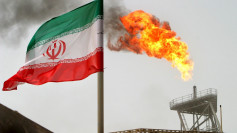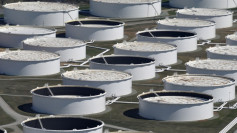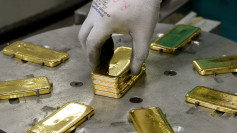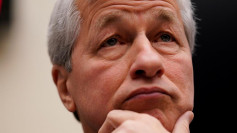Gold futures wrapped up Thursday's after-hours sessions lower, as appetite for risky investments overtook safe-haven assets in the midst of decreasing Mideast hostilities and some positive news from the China-US trade deal signing.
From the US.-Iran situation, investors perceive a relatively less risk, "at least for the time being," Carlo Alberto De Casa, ActivTrades chief analyst, said.
De Casa noted that the Middle East tension had a strong impact on gold, which reflects the sharp decline and a "reconsideration of the danger from the geopolitical situation."
February gold futures on the Comex was down by $5.90, or 0.4 percent, to end at $1.554.30 an ounce after hitting a $1.541 low. In the previous session, prices were also down 0.9 percent, marking a robust turnaround from a Thursday peak at $1,613.30, the highest mark since 2013, data from FactSet showed.
The yellow metal has responded correspondingly with lows to the volatile situation in the Middle East, but then "corrected and consolidated," said Rhona O'Connell, INTL FCStone's Head of Market Analysis for Asia.
According to O'Connel, gold's recent rally was "unwound" now that current tensions in the Mideast have dissipated, and the price is now back to where it started."
Underpinning the gold pullback from its highest level in about seven years, China has announced that its top diplomat, Vice Premier Liu He, is going to Washington to finalize a long-delayed phase-one trade agreement, paving the way for more significant international trade easing between the two economic superpowers.
Chinese Foreign Ministry spokesman Gao Feng on Thursday said that Liu He and another Chinese government official will fly to Washington on Monday.
Focusing on progress towards a proposed China trade pact comes only after US President Donald Trump made remarks that underscored a push towards peace and emphasized that no casualties were reported from the Tuesday missile attacks by Iran on Iraqi US military bases in an apparent retribution for general Qassem Soleimani's killing.
The combination of developments gave a boost to risk assets such as stocks, but created a major drag on precious metals, backed by growing signs of armed conflict and geopolitical tensions.
It is time for the yellow metal to glitter quickly and crack the $1,600 barrier in any meaningful way, at least in the near future, said Craig Erlam, Oanda Europe's senior market analyst, in a note he released late Thursday.
Meanwhile, March silver dropped 23.1 cents, or 1.3 percent, at $17.936 an ounce, after retreating 1.2 percent Thursday, while March copper shed a cent, or 0.4 percent, at $2.802 a pound. April platinum was up $8.20, or 0.9 percent, at $972 an ounce, after shedding 0.8 percent in the previous session.





